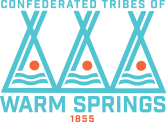The goal of the Hood River Habitat Program is to restore fish habitat to increase natural production of salmon and steelhead in the Hood River Subbasin. Over the past 15 years project staff have worked with subbasin partners to improve instream and riparian habitat and water quality using a variety of restoration techniques. We work with irrigation districts, agencies and other stakeholders to plan and implement projects that restore instream flow, conserve water, and improve water quality and fish passage.
The Program is part of a basin wide fish recovery effort led by the Confederated Tribes of Warm Springs in the Hood River subbasin. The project is part of the umbrella Hood River Production Program (HRPP) that includes a fish production project and monitoring and evaluation project . The goal of the HRPP is to restore Hood River basin fisheries using habitat restoration and integrated / re-introduction artificial production strategies.
Since the inception of this project in 1998 the CTWS has worked with basin partners to facilitate the implementation of active and passive restoration actions to improve instream and riparian habitat and water quality within the Hood River subbasin. Project goals are to recover naturally produced fish stocks thereby enabling tribal members to exercise their treaty reserved rights to fish, hunt and gather in the ceded lands.
The Hood River basin provides habitat for spring/fall Chinook salmon, summer/winter steelhead, Coho salmon and bull trout. All of these species are listed as “threatened” under the ESA. Pacific lamprey are recolonizing the basin after the removal of Powerdale Dam in 2010.
The Hood River Fish Habitat Project addresses, either wholly or in part, the following HRPP programmatic goals:
1. Re-establish naturally-sustaining spring Chinook runs in the Hood River Subbasin.
2. Rebuild naturally sustaining summer steelhead runs in the Hood River Subbasin.
3. Rebuild naturally sustaining winter steelhead runs in the Hood River Subbasin.
4. Protect high quality habitat and restore degraded fish habitat.

The program plans and implements a variety of restoration projects that seek to remedy identified limiting factors within the subbasin. Habitat improvement projects have focused on five specific objectives: instream habitat and flow restoration; riparian vegetation recovery; fish passage; and water quality improvements. Hood River Habitat Program has utilized a variety of techniques to restore instream and riparian habitat. They include the addition of large wood to stream channels and floodplains; riparian fence installation and maintenance to exclude livestock from degraded streambanks; and riparian plantings to restore shading, reduce pesticide spray drift and stabilize stream banks.
This program works in partnership with the four basin irrigation districts to implement projects that restore instream flows and improve water quality and fish passage. Past projects include open ditch piping, fish screen installation and intake structure modification. The realized benefits of these projects include: increased instream flows protected with conserved water agreements; reductions in inter-basin water transfers; improved fish passage; and reduced entrainment of salmonids in irrigation canals.

Water quality monitoring has detected levels of chlorpyrifos and azinphos methyl that have exceeded state standards in Hood River tributaries, including Neal Creek. Since 1999 the Hood River Pesticide Stewardship Partnership (HRPSP) has encouraged voluntary adoption of best management practices to reduce water quality impacts associated with pesticide use in the Hood River. The Project has worked with the ORDEQ, USGS, and HRSWCD on an annual basis to determine the presence and concentrations of pesticides throughout the subbasin. Ongoing monitoring through the HRPSP has revealed a declining trend in detections however numerous organophosphates and other pesticides are still present in basin streams. The Project has worked directly with the Columbia Gorge Fruit Grower’s Association to reduce the input of these chemicals into surface waters.

The ability of the HRPP to successfully implement numerous restoration projects is the result of strong support by basin stakeholders. Past projects and those proposed through 2018 have been developed either entirely or in part with basin stakeholders facilitated by the Hood River Watershed Group. All projects are identified in the Hood River Watershed Action Plan.
During 2014 through 2018 the Project plans to continue implementing projects using the techniques and collaborative approach described above. The ability to refine the location of instream and riparian habitat restoration projects has been aided by recently completed LiDAR assisted analysis. This work has also been used to assess the potential for large woody debris (LWD) recruitment within the riparian corridor of the West Fork Hood River. Future work will include the development of site-specific treatment prescriptions that will enhance the volume and type of LWD recruitment within the upper West Fork.

Approximately 4.5 miles of stream channel will be treated with LWD between 2014-2018. The year and location of specific project implementation cannot be specified at this time due to uncertainties of cost share and logistics.
The HRPP is participating in two planning efforts aimed at identifying projects that will increase water delivery and application efficiencies within the basin’s irrigation districts. A water planning group facilitated by Hood River County has employed three studies to document instream and consumptive water needs within the Hood River subbasin for the next 50 years. The studies include: modeling climate change and glacial recession with stream flow predictions; determining long term consumptive water needs; and identifying instream flows below key withdrawal reaches. These investigations will be completed during the summer of 2013 with a list of potential water savings projects generated by December. It is likely that several miles of ditch piping will be identified along with improvement of water delivery systems such as conversion of sprinklers to micro-head sprinklers. Hood River Habitat Program anticipates working with basin water users to develop a long term water management plan that will, among other things, protect instream flows during expected extended periods of low flows.



